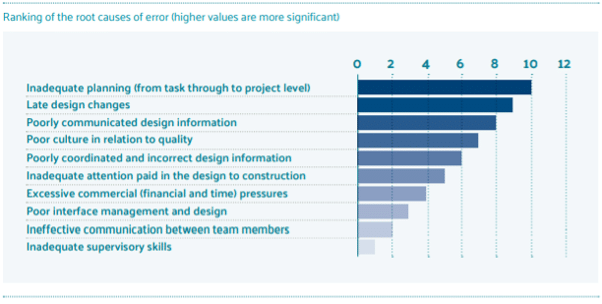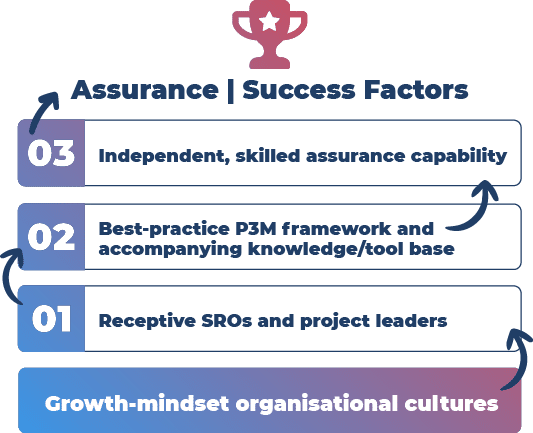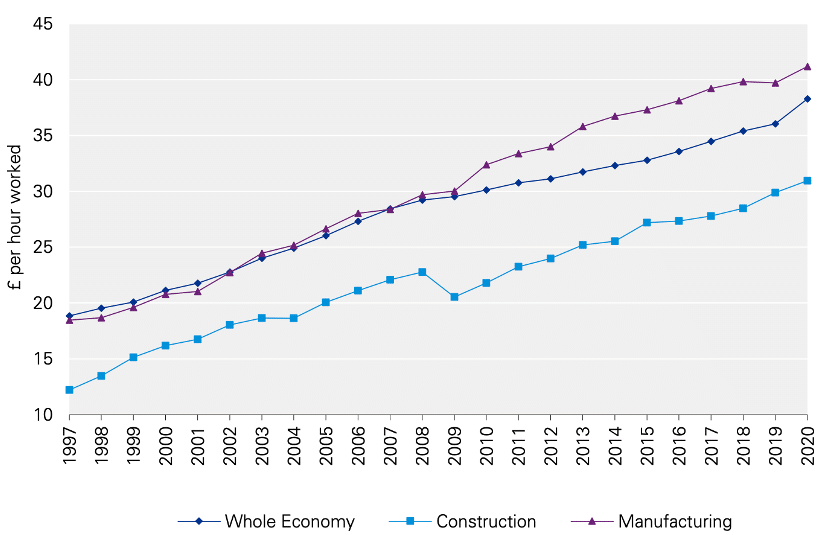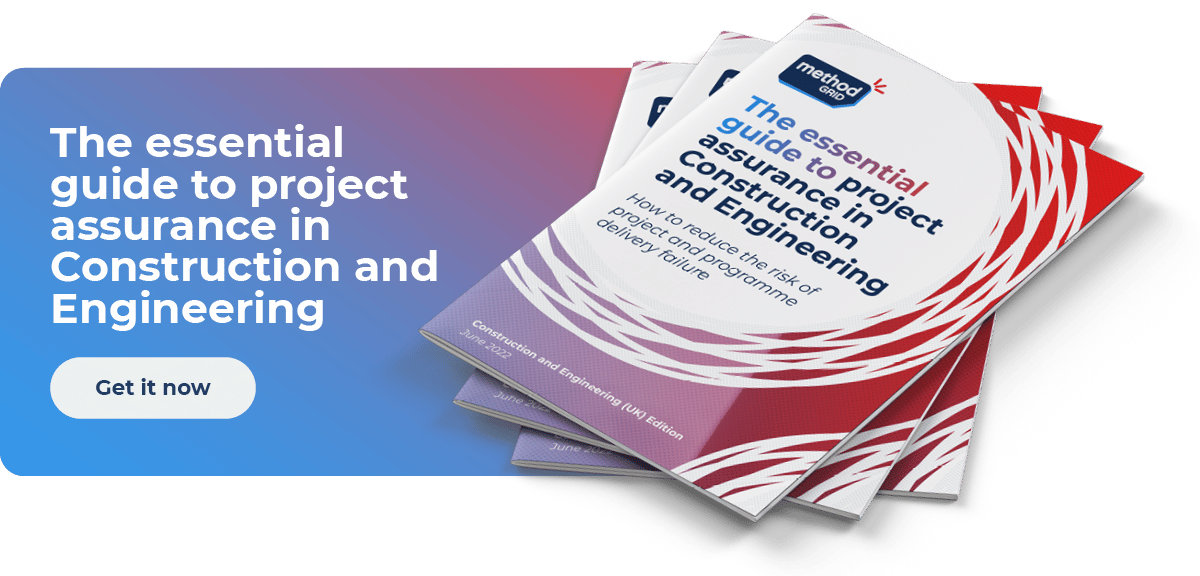In a previous blog, we looked at a definition of Connected Assurance.
In this blog, we turn to the question of why this capability is so critical to companies/teams engaged in the delivery of professional, structured services.
Connected assurance as risk mitigation
Fundamentally, project assurance is risk mitigation as applied to the execution of P3M delivery; effectively, assurance is risk management turned in on the subject of project governance and delivery practice.
It is often forgotten that the development of project delivery frameworks and standards (e.g. Prince2, Managing Successful Programmes [MSP], Project Management Institute [PMI] Body of Knowledge [BOK], Royal Institute of British Architects [RIBA] Plan Stages of Work etc.) have all been authored in the blood of a thousand failures. That is, all such frameworks have been developed to address the myriad of documented project failures recognising that, at the root-cause analysis of such failures, there was an earlier stage practice-omission or decision-error. Such omissions invariably trace back to the absence of management control product, technical-scope clarity and governance generally.
Project assurance, therefore, is fundamentally the discipline of assuring that any variation from such best-practice paths is, as a minimum, understood such that, if not for sound contingent-reasoning, it can be corrected. The assurance act, therefore, is fundamentally one of regular, systematic in path correction as opposed to theoretic reflection. As assurance reviews are about providing pragmatic observation and recommendation on project progress, it is important to note they are not about penalising project teams.
It should also be noted that assurance has a pivotal role to play in communicating to all project stakeholders any insights that can improve adherence to legislative requirement and/or improve ultimate project success. Well placed assurance often also plays a key part of a stage-gated approval (business case) process; in such a vein they will be conducted to provide a challenge and support (critical friend) dynamic to senior responsible owners (SROs).

Figure: Root causes of error (Source: Call to Action, Get it Right Initiative)
Axiomatic to assurance is its independence. As any battle-scarred project team leader or member will know, the relentless demands of project delivery are such that teams are
often seduced to go maverick or short cut. A pervading sense of ‘this project is wholly unique’ often erroneously justifies the reality of a near-wholly replicable project and delivery form. Even without such self-delusion, busy project teams just develop common blind spots – as to be found in any field of shared human endeavour.
Against this context, independent assurance is paramount – via internal quality/assurance professionals (say, as provided by an organisation’s control centre or oversight function), peer professionals ( e.g. Cat 1 or Cat 3 design check) or a constituted external body (e.g. Infrastructure and Project Authority [IPA] remit to assure complex projects within the UK’s Government Major Projects Portfolio [GMPP]).
At a broader level, the benefits of deliberately investing in the development of a connected assurance capability are manifold. Specifically, within the context of the AEC sector, it can result in manifest organisational productivity efficiency (reduced re-work cost, faster project mobilisation, improved resource-unit margin etc.)

Recognising the centrality of the AEC sector to most national economies, such improvements directly roll-up to broader economic- productivity gains (via upstream and knock on effect) and enhanced end-citizen social-value (societal and environmental) as a function of higher-quality, more-sustainable built assets.
In so much as the construction sector is (fairly) challenged to improved recognised productivity-lag (relative to other sectors), the marginal efficiency improvement to be realised here is significant.
The timing for such deliberate investment could not be more apposite also. The UK’s political agenda of ‘Build back better’, ‘Levelling up’, and the promotion of a net-zero, green industrial revolution is emblematic of a global ambition – as recently reinforced with the multi-state COP26 Agreement.
Get your copy of the complete guide to connected assurance
In this free eBook, with the experience of working with industry leaders, we explain what connected assurance is and the fundamental role it will play in the future of project and programme delivery.
Connected assurance as a productivity enabler
At a quantitative level, recent benchmark analysis of major UK construction schemes (KPMG, 2021) indicates such information-management enabled productivity gains are significant: potentially securing £5.10 and £6.00 of direct labour gains for every £1.00 invested – and – between £6.90 and £7.40 in direct cost savings (from reductions in delivery time, labour time and materials).
At a qualitative level, the social value aspect is increasingly being placed at the heart of the AEC corporate agenda – certainly the upper quartile players have moved beyond this promise as a somewhat empty piece of espoused rhetoric towards meaningful action. Competently assured construction projects, coupled with coherent IM enablement, has a direct line of sight to enhanced asset design which, in turn, begets private, end-user benefits (e.g. safer residential accommodation, improved educational and health outcomes, journey time savings etc).

Figure: Lagging productivity in the construction sector (Nominal, 1997-2020) Source: KPMG analysis of ONS (1997 – 2020) Labour Productivity by Industry Division.
Critically also, this discipline embedded within the fabric of project-contributor firms is meaningfully reducing the externality-costs inherent in construction – as optimising of a building’s construction, integration into public realm, sustainable operation etc. Enlightened leaders in the industry increasingly recognise that such an authentic focus is not just about doing the right thing but is also integral to their own, selfish, long- term enterprise value – as contingent as this is on customer-derived reputation.
Connected assurance | Summary benefits
Building a connected assurance capability takes time and coordinated effort but for leading AEC organisations on this journey, the results and benefits have been manifest. In response to a “does any of this really matter?” challenge, upper-quartile companies would claim multiple derived benefits as a function of investment in this critical area:
In summary, connected assurance (as a well-constructed confluence of P3M assurance and information/knowledge/ task management) can serve as the bedrock on which your organisation’s P3M capabilities are built; which, in turn, will serve as a bedrock for predictable, consistent project delivery success.
Organisations that summon the energy to build such foundations will not only build rare reputation for repetitive delivery success, but they will also continuously outgrow their competitors – as delivery experience gets systematically fed back into an ever-improving knowledge asset.

 Project and Program Management
Project and Program Management  Project Governance Framework
Project Governance Framework  Benefits Management Framework
Benefits Management Framework 








